Trending
Opinion: How will Project 2025 impact game developers?
The Heritage Foundation's manifesto for the possible next administration could do great harm to many, including large portions of the game development community.

Featured Blog | This community-written post highlights the best of what the game industry has to offer. Read more like it on the Game Developer Blogs or learn how to Submit Your Own Blog Post
The waves of fanart and appreciative posts by Wuthering Waves fans suggest that developer Kuro Games has crafted fetching characters. What makes them appealing?
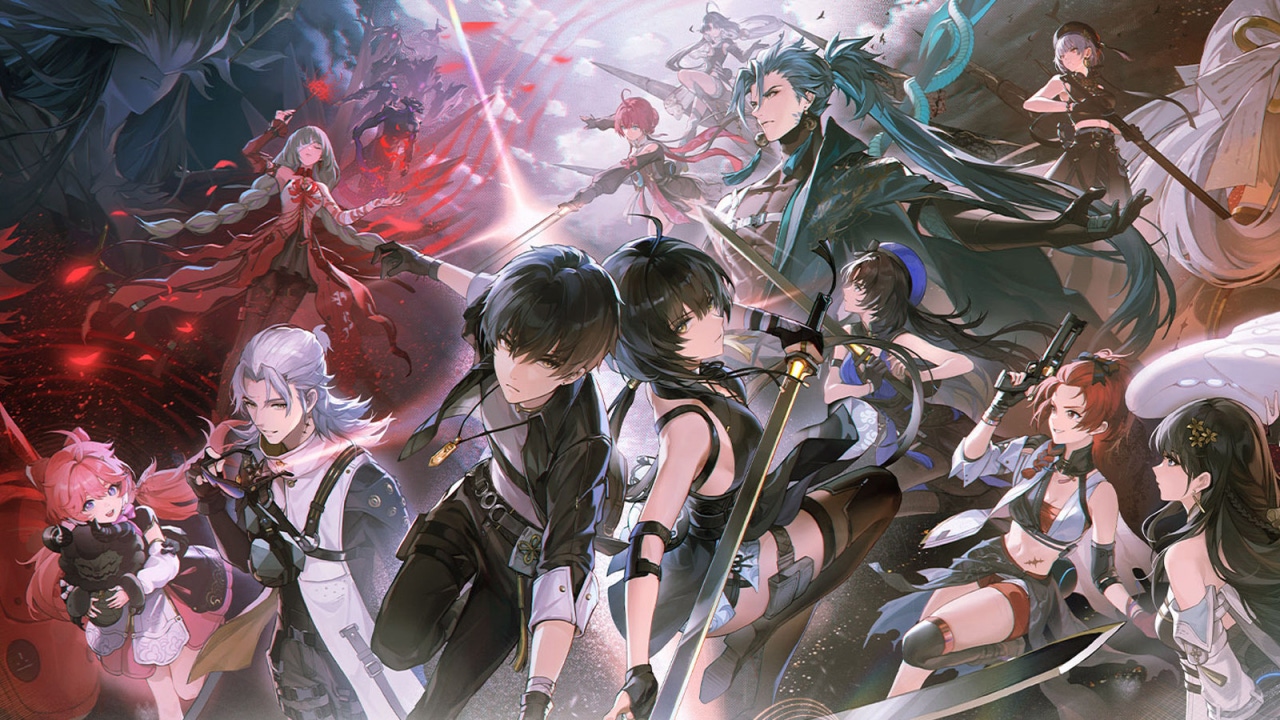
Let's be frank: Creating a brand-new fictional universe, let alone one their creators expect audiences to spend lots of time in, is no small feat.
This is especially true of (role-playing) video games. They can ask players to set aside dozens, if not hundreds, of hours to explore every branching path, playstyle, and nook and cranny the title in question offers. And as the likes of Mass Effect (2007), Trails of Cold Steel (2013), and Genshin Impact (2020) showed, the worlds one immerses themselves into must house fetching vibes, lore, characters, and tales that compel gamers to embark on a long and eventful journey.
It's also no coincidence that RPGs live or die by the roster of personalities players control or interact with, a fact that's well understood by genre entries employing the gacha mechanic—a monetization system that encourages players to invest real-world cash for the benefit of unlocking new characters, abilities, and gear. And what better way to get players to take the plunge than by making said characters so attractive from a gameplay, presentational, and narrative standpoint that they might be tempted to splurge a little and acquire new mains?
Such was the path the aforementioned Genshin Impact took and its developer miHoYo iterated upon with Honkai: Star Rail (2023) and Zenless Zone Zero (2024). Yet it's not the only big kid on the gacha block, as Kuro Games also took a whack at the task of crafting an action role-playing title in which gamers can picture themselves acquiring and playing as colorful figures.
That action role-playing title is Wuthering Waves (2024), or WuWa for short.
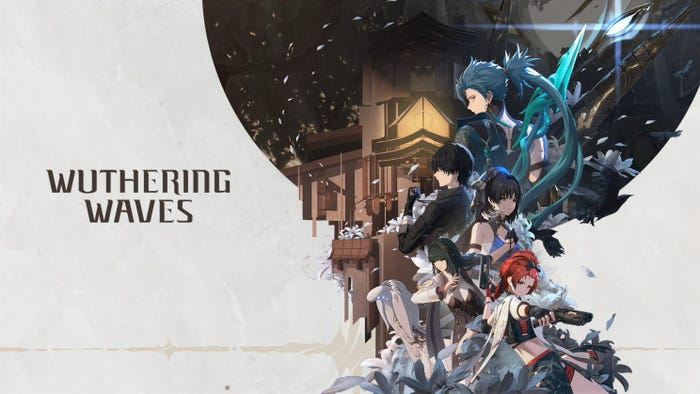
Set in the post-apocalyptic realm of Solaris-3, where anomalous threats called Tacet Discords roam the earth and prey on those seeking to rebuild human civilization, WuWa strongly takes after the likes of Death Stranding (2019), Xenoblade Chronicles (2010), and NieR: Automata (2017) in terms of world design and atmosphere. Between the verdant meadows and urban ruins that dot the open world, Solaris-3's many regions strike a balance between the colorful and gloomy—yielding an environment that's neither too serious nor overly cartoony.
It's through this observation, then, that players start to see a similar pattern in the approach Kuro Games took with its cast of playable characters—arguably the most important facet of a gacha-powered RPG that can mean the difference between an experience that receives updates in the long term and one that dies prematurely. Thankfully for the developers, the waves of fanart and appreciative online posts by players suggest that they managed to craft a roster that's likely to get as much praise as Genshin Impact's characters have while still standing out from its competitors and perhaps prompting miHoYo to study Kuro Games' work.
So what makes WuWa's characters so appealing and noteworthy in terms of looks and personality, especially given that the game's story still has some catching up to do when stacked up against Genshin Impact (the title players are most likely to compare WuWa to)?
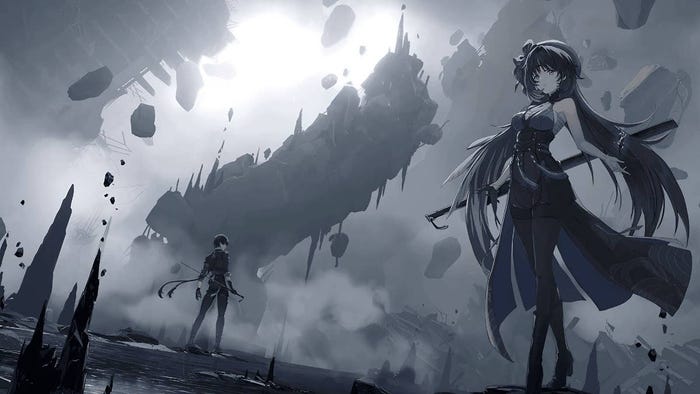
Being a gacha RPG that embodies an anime-based art style, it should come as no surprise that WuWa's characters are meant to stand out from the common rabble and their surroundings. After all, your average player will likely first learn about a gacha title from a screenshot or trailer showcasing a character's gameplay chops and/or audiovisual traits—making first impressions a must for developers wanting to generate a "love at first sight" effect in gamers.
This is a fact Kuro Games understood quite well when it came to designing WuWa's characters, with the post-apocalyptic setting even giving the team a chance to craft something that doesn't look like a carbon copy of miHoyo heroes but elicits the same wish to pull new avatars.
Perhaps the foremost aspect of WuWa's cast is the fact that their attires are not only varied in terms of color scheme and clothing items, but also uniform in the main choice of couture that drives home the science fantasy feel WuWa's going for. This is where techwear comes into play.
In the simplest definition of the word, techwear refers to a category of clothing that fuses fashion and advanced materials designed for style and functionality—combining futuristic aesthetics, cutting-edge technologies, and unorthodox construction techniques aimed at maximizing mobility and comfort while still letting the wearer feel like they dress to impress.

As the images above and below this paragraph suggest, WuWa's characters blend techwear with color palettes and clothing articles reminiscent of anime-/manga-heavy art directions. For starters, all the outfits on offer are meant to be form-fitting, comfy, and adorned with carbon fabric and matte finishes emphasizing the fabric's high level of quality. Between the belts and straps that make up Yangyang's uniquely silhouetted skirt and the armored sleeves and techwear poncho that lend Aalto his "need for speed" biker aura, the different items worn by each character succeed in making the whole roster feel united in their belonging to the same world and game while still leaving room for standing out among the colorful crowd.
Speaking of color, the elements of unity and distinctness also rear their heads. On one hand, virtually all the characters have white and black on their person—with some having more of one color than the other. This is another aspect of clothing design derived from techwear, especially given that it tends to fall into two categories: "gray" (elegant, discreet, the familiar amplified) or "black" (striking, military-inspired). On the other hand, the abundance of monochromatic colors makes tertiary hues and shades pop even more, to the point where some characters can stand out from the pack and have their personality highlighted.
Whether it's the chirpy Encore's predisposition to wearing lots of pink or the use of blue by Yangyang and Yuanwu to underline their cool and graceful demeanors, Kuro Games' liberal and creative wielding of color gives the player characters and the game as a whole a visual identity that's simultaneously stylish and grounded. This is without mentioning the fact that the heroes' professions may be deduced from how they're dressed. One look at Mortefi, for instance, will make one correctly believe he's the scientific type. A character like Chixia, however, will be pegged as the sort to roam the outdoors in a carefree and lively manner.
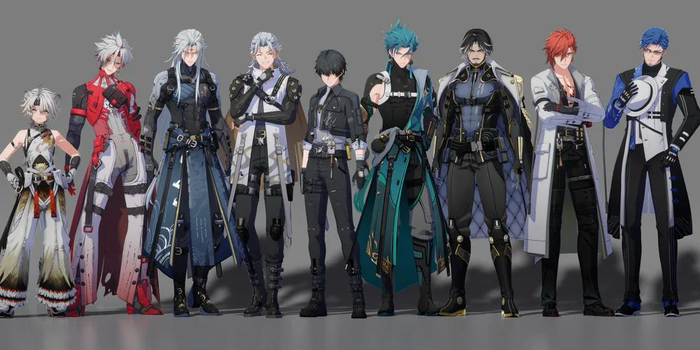
Of course, a character's visual design alone is merely the tip of the iceberg in terms of getting players to fall in love with them. How they animate and behave at any given moment (particularly from the get-go) can also play a role in influencing gamers' choice of hero, a decision that shouldn't be made lightly seeing as it takes a while to level up many characters at once. Ergo, a simple piece of splash art showcasing a specific personality may not be enough to convince players to invest in them. Again, Kuro Games was well aware of this.
When players first acquire a character via the in-game Convene storefront, for instance, they'll be treated to a short cinematic that shows the hero in question behaving in a way that emphasizes their demeanor and speech pattern. As with visual design, first impressions matter a great deal with introductory animations—especially given that gamers are likely to see a character's look for the first time during that specific cinematic. Depending on how many stars (either four or five) a WuWa character has, the animation can range from a simple gesture that still conveys the hero's personality convincingly (e.g. Danjin) to a full-blown short movie that seems to pull out all the stops in the VFX department (looking at you, Jihnsi). WuWa's different pull animations are geared toward keeping players from feeling any kind of buyer's remorse.
What's particularly exciting about those introductory animations is that they stand out from the standard splash artworks that weapons get whenever players decide to pull. Therefore, it can feel thrilling when gamers don't expect to earn anything juicy (i.e. they just get the standard weapon acquisition animation, if one can call it that), and yet they're pleasantly taken by surprise when someone appears onscreen and starts moving in a fittingly characteristic way.
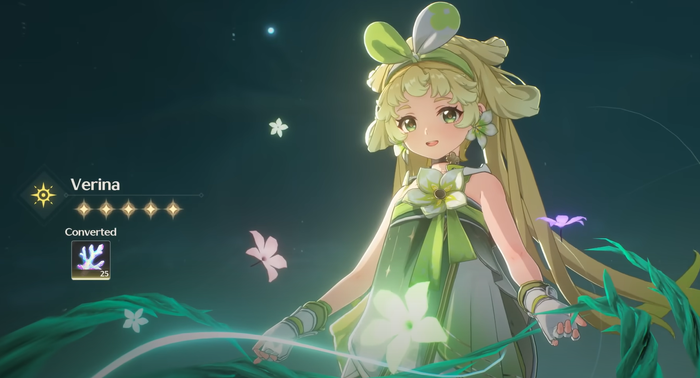
It doesn't stop there, however. Upon pulling a certain hero, players are given the option to inspect their latest find in a character stat screen. Spawning said hero onscreen always leads to players being greeted with a short animation that once again aims to highlight the character's charm and/or coolness. The seemingly stoic Sanhua, for example, never fails to put a smile on her face by pulling on the corners of her lips with her fingers (suggesting that smiling isn't a muscle memory to her, hinting at a cheerless past). Verina, on the other hand, always enjoys hopping on one foot with a natural smile on her face before standing upright—showing players that even a world gone belly up isn't enough to rob the girl of her youthful optimism.
The same can be said of the idle animations that are triggered whenever player characters remain, well, idle. Some of them can reinforce a character's already known traits such as Baizhi's habit of stroking her pet companion You'tan. Others can even reveal a side of the character they didn't know beforehand. Jianxin's a great example: Just watch her trying to make sense of the spherical terminal she and other player characters carry on their back. One can tell from her being startled by holographic displays that she has lived in the boonies as a child. (Bonus points for using her ahoge—a lock of hair common among some anime/manga characters—as a flute, showing that she doesn't need newfangled tools to play a tune.)
The gist of all this, then, is that WuWa understands the need to make characters appear, sound, and move in a way that's bound to pique folks' curiosity and win the hearts of at least one subset of gamers (regardless of which playstyle they may be into). The animations on display are also welcome in that they make navigating menus less of a chore, with the characters' very presence making players feel at home and potentially making them more careful about customizing their hero for optimal gameplay. Don't want to disappoint the endearing Encore—who seems to eye players expectingly at the end of her menu animation while hugging one of her companions—by equipping her with lackluster gear and abilities!
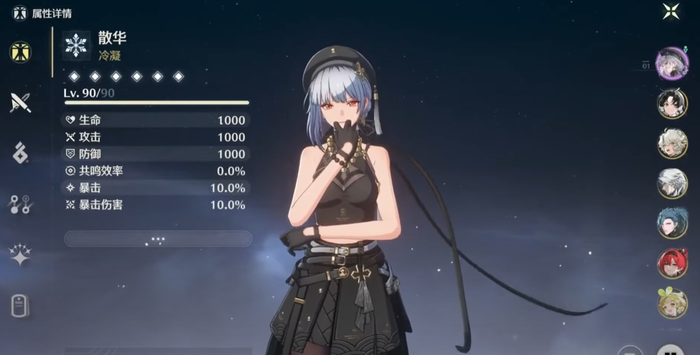
So far, it's clear that WuWa's characters look and act the part, but their personality's appeal doesn't merely lie on the surface. How they convey their traits through their choice of words and the way in which they're delivered also plays a role in making players want to spend lots of time with a specific hero. This is where vocal performances get involved, with different voice actors handling different characters in different languages—meaning the task of bringing them to life and making them worthy of a pull is a tad tricky. While results may vary in terms of how the characters' innermost selves are auditorily rendered, there are still noteworthy examples out there that sound convincing enough for players to picture themselves liking their choice of avatar without even glancing at their monitor—regardless of language.
For the purposes of this article (and in line with this author's own experience with WuWa), the Japanese and English dubs specifically will be looked at. In the case of the former language, all of WuWa's characters evoke that quintessential anime vibe already apparent in the title's art direction. From Natsuki Hanae's sterling handling of the youthful and energetic Lingyang to Asami Seto's elegant performance as the coolheaded and studious Baizhi, the seiyuu (voice actors in a Japanese-made cartoon, movie, or game) made their respective characters fetching and expressive—keeping their colorfulness from remaining solely on the literal surface.
If there's one personal highlight from WuWa's Japanese dub, it would likely be Taoqi—whose laid-back and gentle nature is immaculately communicated via Hina Yōmiya's take on the sleepyhead. Whichever avatar players end up loving, there's a strong chance they'll be visiting the Voice submenu in the character stat screen and playing all the recordings they've unlocked to get a taste of their avatar's personality without having to perform specific in-game actions.
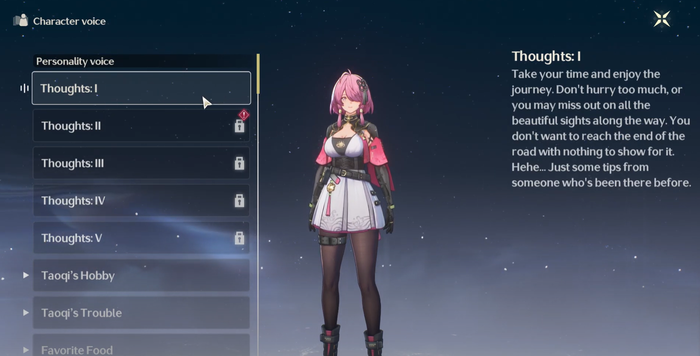
While the English dub's level of quality does vary from one character to another—something that most dubbed anime shows similarly experience—there are still some performances in WuWa that may have anglophones (like yours truly) become enamored of a (non-)player character. Between Rae Lim's elegant performance as the villainous Phrolova and Joseph May's slightly (and fittingly) gruff take on the seemingly unapproachable scientist Mortefi, select instances in the English voicework can incentivize players to refrain themselves from skimming voiced dialog lines during story events. They can even remind gamers of some of their favorite anime shows and Japanese-made RPGs soundscape-wise. That WuWa will see more content updates (i.e. more characters to choose from) means that it remains to be seen how far Kuro Games will go in terms of crafting compelling characters with increasingly solid voice lines.
As for standout performances in the world language, Naomi McDonald's vocal role as the string-using undercover agent Yinlin springs to mind. If her seductive looks and mysterious aura don't readily win players over, then the husky delivery of her lines will. This is to say nothing of her prowess in combat, which only reinforces her status as a force to be reckoned with. One should also not be surprised if they find themselves reviewing Yinlin's voiced recollections in her character stat screen, especially given her tendency to be rather coy.

Character designs, animations, and performances are more than enough for most players to settle for a particular hero to play as and build throughout their extended stay on Solaris-3. In fact, there's a narrative incentive for gamers to invest lots of time and resources into a specific figure—one they may see for themselves should they regularly go to the character stat screen.
As time goes on and players garner more XP with a particular set of characters on their team, they'll notice that new story entries pertaining to said characters will gradually become unlocked after meeting certain Intimacy thresholds. With WuWa's overarching narrative still in its early days and therefore in need of further expansion to compete with the likes of Genshin Impact and Honkai: Star Rail, it's currently up to character backstories to do the narrative heavy lifting. What's particularly interesting about them is that they may potentially reveal facets of a hero that players may not have noticed just by eyeing their design and animations, lending them depth and making gamers look forward to a quest fleshing out their character.
Take Danjin, for instance. On the surface, the red-haired and endearing blademeister may seem like an innocent wayfarer looking to carve her way through a ravaged world without inconveniencing others. Her idle animations reinforce that fact, with Danjin often being seen nibbling and looking bashful when she breaks the fourth wall by realizing that players have been watching her all this time. It's a cute touch that highlights her wholesome personality.

A closer look at some of her voice lines and backstory entries, however, reveals a much darker and more gruesome side of her that only evildoers get to see should they be unlucky enough to stand in her path or take advantage of her without knowing her true nature. The first entry sets the tone for what players may expect from immersing themselves into the role of Danjin: While trekking across Solaris-3 in search of someone, she bumps into a dubious figure who claims that he may be hosting the very person Danjin's looking for. What he didn't say is that he's actually a bandit who lures innocent travelers to his hideout and holds them hostage. What he doesn't know, however, is that he picked the wrong soul to prey on. The picture above this paragraph should clue readers in on what unfolds at the end of the entry.
In other words, character backstories can be a great way for gacha or other live-service titles to shed more light on their (non-)player characters in case the overarching story alone needs more fine-tuning and fleshing out to stand on its own and draw folks into the title's world.
Being in its early days, WuWa finds itself in a similar situation. But as mentioned at the start of this analysis, the fact that fans have already been singing the praises of the RPG's playable roster speaks volumes of the TLC poured into each personality. It's very likely that gamers wouldn't be sticking around to the same extent had the characters been lacking in charm, depth, or a blend of both. That the backstories themselves are tied to a hero's level of Intimacy is also a clever move on Kuro Games' part since it emulates the way a person in real life would be loath to share private information with a stranger unless they spent enough time together.

Okay, so one knows that the characters look great, sound the part, move convincingly, and harbor backstories that invite further exploration and updates on Kuro Games' part. But what about their gameplay chops, i.e. the part that helps WuWa distinguish itself from its gacha contemporaries? Do they manage to make every fight feel, look, and sound like something you'd see in a shonen anime show? Can they do so while being unique in their own right?
The short answer? Yes. The long answer? Stick around. (No, it's not just one extra word.)
One of WuWa's chief selling points is its focus on fast-paced, skill-based combat that'd be more at home in a Capcom hack 'n slash title than in your average action RPG. Couple that with Soulsborne elements, such as an emphasis on dodging and parrying, and one ends up with fights where the stakes can be as high as that mountain chair WuWa players talk about online. Obviously, a high-octane fighting system would be lacking in substance if everyone controlled and looked the same in the heat of the moment. But as with their designs, VOs, and backstories, WuWa's heroes hail from all walks of life where clobbering time's concerned.
Whether a character excels in long-ranged combat or melee skirmishes, WuWa's blend of combat styles pulls no punches when it comes to showing off what a hero can do upon reaching and unleashing their full potential. This is most evidently seen in the title's ultimate moves, with the camera panning around the character and VFX popping up left and right to accentuate the amount of power the avatar's channeling before finally giving it their all.

This can be observed in many ultimate animations that encapsulate their respective character's fighting style and personality. Mortefi, for example, can't help but flick his lighter open and eye his target with a look fiery enough to charbroil his quarry before he can even attack. Aalto, on the other hand, puts the "mate" in "ultimate" by donning his trademark sunglasses and flashing a smile before pulling the trigger—letting players know that they've got a bud in Aalto. Perhaps the best part about those ultimate animations is that they don't just make players feel empowered by the fact that they're about to send their foes downstairs in one fell swoop, but they also offer developers a chance to double down on the characters' demeanor without breaking the flow of combat. It should come as no surprise, then, that some professionals online studied the roster's moves to see what makes them so neat to watch.
This elegant blend of gameplay and presentational touches isn't merely limited to the characters' unleashing of their true powers, though. Even their basic attacks and movements bear that idiosyncratic touch seen in their designs and VOs. From Jihnsi's graceful swings and dragon-summoning to the phoenix motifs Changli gives off with her slashing 'n dashing, the characters' regular movesets manage to evoke the level of aggression, restraint, and oomph players expect to see with regard to how their avatars behave and talk outside combat.
Of course, players are just as likely to pick a hero because they dish out the most damage and/or are more conducive to their own playstyle—even if they may not sport their favorite animations and/or combat lines. Still, Kuro Games' willingness to go the extra mile with the characters' fighting animations is to be praised for reinforcing one's attachment to their mains.

As with Team Fortress 2 (2007), Overwatch (2016), and Honkai: Star Rail, WuWa isn't shy about putting its roster of heroes in the spotlight and having everyone be on their best (i.e. most idiosyncratic) behavior. While more of a marketing tool than something to look out for in-game, the Resonator Showcase trailers that tided people over till the game's official release in May 2024 still offered folks the world over a taste of what they might expect from the heroes in terms of gameplay, story, and presentation. And as with their idle and combat animations, no two characters are the same with respect to the kind of first impressions they're making.
A solid example of a trailer that's likely to sell viewers into a character they can picture themselves pulling is Jianxin, a Taoist monk specializing in tai chi and providing support buffs to her teammates. Obviously, there's more to Taoism than subduing baddies roaming around Solaris-3—which is where Jianxin's sense of duty to others comes into play.
Being well-versed in the philosophy's Three Treasures (compassion, moderation, and humility), Jianxin never misses a chance to do good as a bee makes honey—with her trailer "A Decent Challenge" highlighting the fact that she's willing to move, climb up, and even fall off mountains to please a highly discerning tea connoisseur. Most folks wouldn't dare take on the challenge of finding rare ingredients in dangerous areas, but Jianxin isn't one to back away from a chance to prove herself as someone committed to making the world more virtuous.

On the other side of the emotional spectrum lies Jiyan, the general of the Midnight Rangers tasked with protecting the region of Jinzhou from external threats. As his design and combat moves suggest, he's very much the "fight or die with honor" warrior type who's loath to walk away from a fight if it means being able to have his fellow citizens live another day to exercise their freedoms. This Lawful Good approach to warfare, however, can be a double-edged sword (or spear, in Jiyan's case)—with the trailer's rainy atmosphere and abundance of corpses showcasing the fact that the odds are stacked against Jiyan's favor. And that's before mentioning his failure to protect his fellow warriors, who were less keen on fighting off the Tacet Discords that make life on Solaris-3 a challenge for those wishing to rebuild civilization.
Whichever trailer players end up watching in full, they're guaranteed to get a blend of story and gameplay sequences that encapsulate the character's personality and way of taking on challenges. As WuWa's world becomes larger with more content updates and available heroes to play as, it's likely that such trailers will keep popping up and highlighting the heroes' unvarnished selves—making gamers look forward to jump into the title's world as their main.

Thank you for reading! Feel free to share this article with your friends.
Twitter: https://twitter.com/Watfen64
Email: [email protected]
LinkedIn: https://www.linkedin.com/in/sabbaghmichel/
You May Also Like